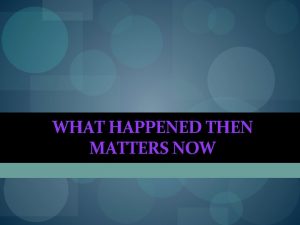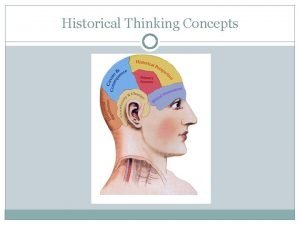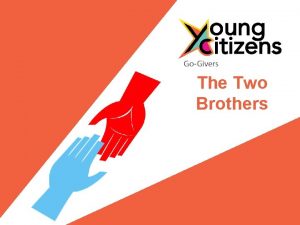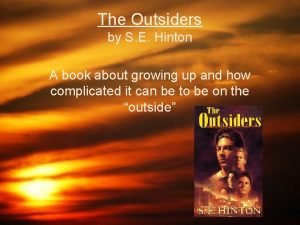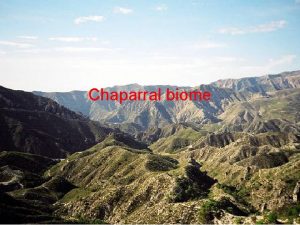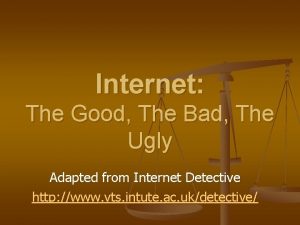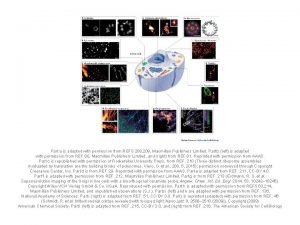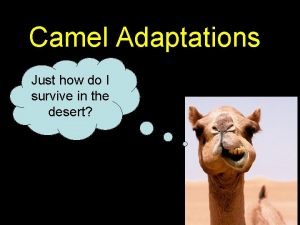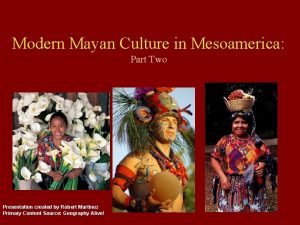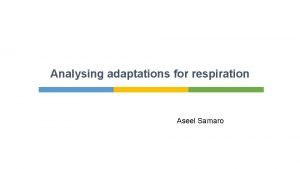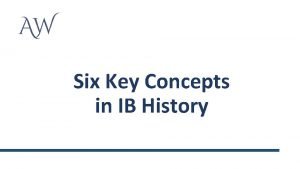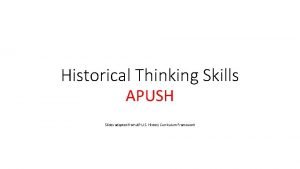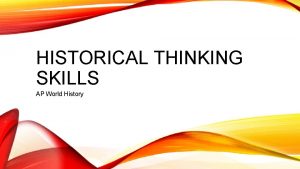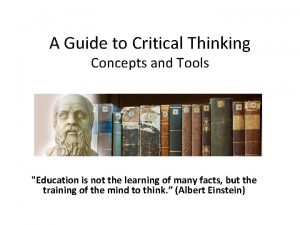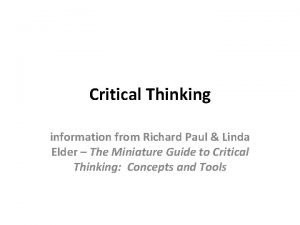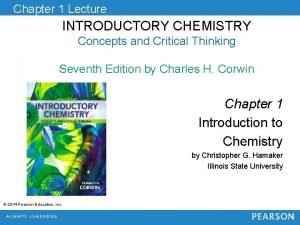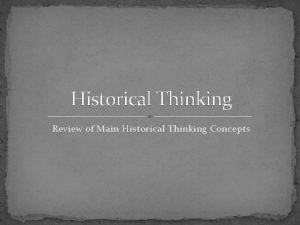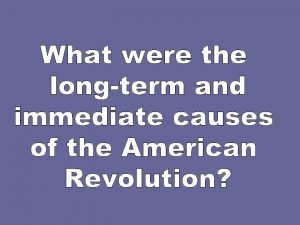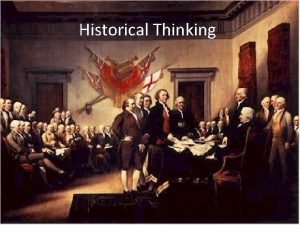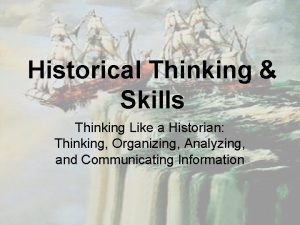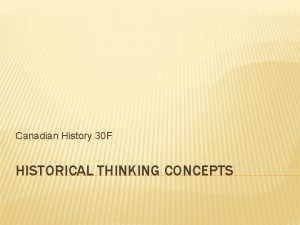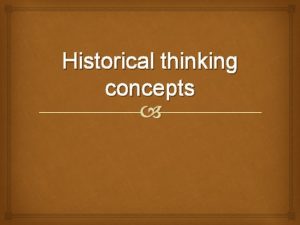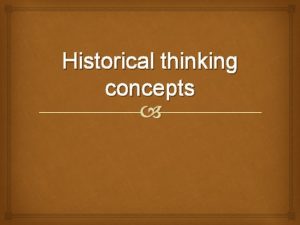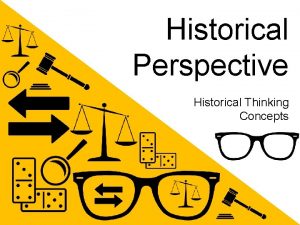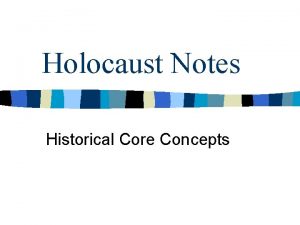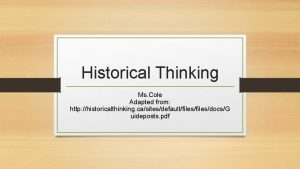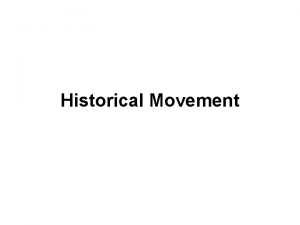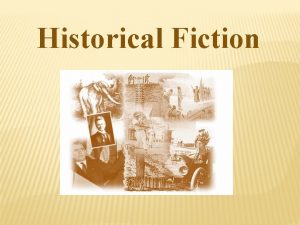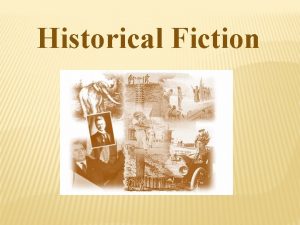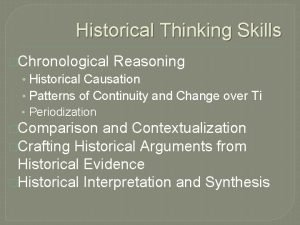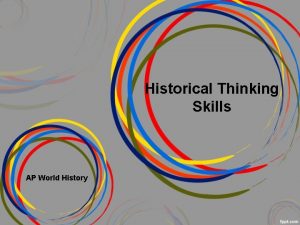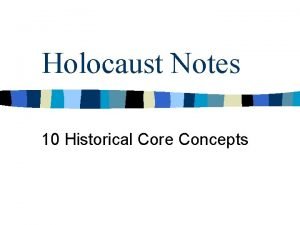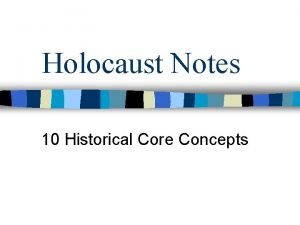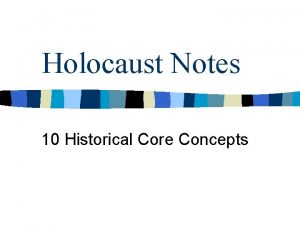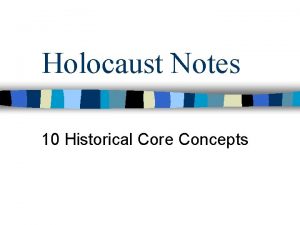Historical Thinking Concepts Historical Thinking Concepts ADAPTED FROM

























- Slides: 25

Historical Thinking Concepts

Historical Thinking Concepts ADAPTED FROM THE BIG SIX HISTORICAL THINKING CONCEPTS BY PETER SEIXAS AND TOM MORTON PUBLISHED BY NELSON EDUCATION

Historical Significance

Historical Significance Activity �Create a timeline to illustrate the twenty most significant events in … history or, the history of our planet or, human history or the history of the 20 th Century or, …

�Events, people or developments Historical Significance Guidepost 1 have historical significance if they resulted in change. �That is, they had deep consequences, for many people, over a long period of time.

�Events, people, or developments Historical Significance Guidepost 2 have historical significance if they are revealing. �That is, they shed light on enduring or emerging issues in history of contemporary life.

Historical Significance Guidepost 3 �Historical significance is constructed. �That is, events, people, and developments meet criteria of historical significance only when they are shown to occupy a meaningful place in a narrative. �Did it result in change? �Did it reveal something? �The narrative tells what happened. �Historical Significance established.

Historical Significance Guidepost 4 Historical significance varies over time and from group to group. This "heroic" scene of Columbus "discovering" America erroneously depicts the event that led to the demise of Taino culture in less than one generation.

Cause & Consequence

�Change is driven by multiple Cause and Consequence Guidepost 1 causes, and results in multiple consequences. �These create a complex web of interrelated short-term and long -term causes and consequences.

�The causes that lead to a Cause and Consequence Guidepost 2 particular historical event vary in their influence, with some being more important than others.

Cause and Consequence Guidepost 3 �Events result from the interplay of two types of factors: (1) historical actors, who are people (individuals or groups) who take actions that cause historical events, and (2) the social, political, economic, and cultural conditions within which the actors operate. Adolf Hitler attends a rally in the Munich Odeonsplatz to celebrate the declaration of war in 1914.

Cause and Consequence Guidepost 4 �Historical actors cannot always predict the effect of conditions, opposing actions, and unforeseen reactions. These have the effect of generating unintended consequences.

Cause and Consequence Guidepost 5 �The events of history were not inevitable, any more than those of the future are. Alter a single action or condition, and an event might have turned out differently.

Continuity & Change

�Continuity and change are Continuity & Change Guidepost 1 interwoven: both can exist together. Chronologies – the sequencing of events – can be a good starting point.

�Change is a process, with Continuity & Change Guidepost 2 varying paces and patterns. Turning points are moments when the process of change shifts in direction or pace.

Continuity & Change Guidepost 3 �Progress and decline are broad evaluations of change over time. Depending on the impacts of change, progress for one people may be decline for another. John Gast’s American Progress

Continuity & Change Guidepost 4 �Periodization helps us organize our thinking about continuity and change. It is a process of interpretation, by which we decide which events or developments constitute a period of history.

Historical Perspective

Historical Perspective Guidepost 1 �An ocean of difference can lie between current worldviews (beliefs, values, and motivations) and those of earlier periods of history.

�It is important to avoid Historical Perspective Guidepost 2 presentism – the imposition of present ideas on actors in the past. Nonetheless, cautious reference to universal human experience can help us relate to the experience of historical actors.

�The perspectives of historical Historical Perspective Guidepost 3 actors are best understood by considering their historical context.

�Taking the perspectives of Historical Perspective Guidepost 4 historical actors means inferring how people felt and thought in the past. It does not mean identifying with those actors. Valid inferences are those based on evidence.

Historical Perspective Guidepost 5 �Different historical actors have diverse perspectives on the events in which they are involved. Exploring these is key to understanding historical events.
 Historical thinking concepts meaning
Historical thinking concepts meaning Historical thinking concepts
Historical thinking concepts The two brothers adapted
The two brothers adapted Erythroposis
Erythroposis The outsiders adapted for struggling readers
The outsiders adapted for struggling readers What is spermopsida
What is spermopsida Chaparral biome location
Chaparral biome location Adapted from the internet
Adapted from the internet Adapted with permission from
Adapted with permission from Sustained synoynm
Sustained synoynm Adaptation of camel in points
Adaptation of camel in points Gallant
Gallant In what ways have the highland maya adapted to modern life?
In what ways have the highland maya adapted to modern life? Behavioral adaptations of zebras
Behavioral adaptations of zebras Adapted animals in the rainforest
Adapted animals in the rainforest This passage is adapted from jane austen
This passage is adapted from jane austen How have plants adapted to the rainforest
How have plants adapted to the rainforest Xerophytic adaptations
Xerophytic adaptations History curriculum victoria
History curriculum victoria Ib historical concepts
Ib historical concepts Apushslides
Apushslides Ap world historical thinking skills
Ap world historical thinking skills Well cultivated critical thinker
Well cultivated critical thinker The miniature guide to critical thinking concepts & tools
The miniature guide to critical thinking concepts & tools Introductory chemistry concepts and critical thinking
Introductory chemistry concepts and critical thinking Thinking about you thinking about me
Thinking about you thinking about me
